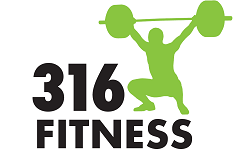Science Friday: Aerobic Exercise + Strength Training = Optimum Body Composition Changes
There are a lot of women out there that think that aerobic exercise alone will produce the kind of changes in body composition they want to see. Images of bodybuilders and other strength athletes have them worried that lifting weights will make them too big and bulky. The study we’ll look at this week shows that lifting weights alone will not decrease fat mass and that aerobics alone will decrease fat mass but not increase lean body mass – not exactly new science here. However, a combination of the two led to greater increases in fat loss, lean muscle mass and a substantial decrease in waist circumference, and I think those are all things that women and men would be interested in.
The paper is a relatively controversial study entitled “Effects of aerobic and/or resistance training on body mass and fat mass in overweight or obese adults.” I say controversial because some of the conclusions drawn by the authors have sparked debate but are really immaterial to our review – we’ll simply look at the data and draw our own conclusions!
In this trial the authors randomly placed participants into 3 categories:
- Resistance Training (RT) – 3 days/wk; 3×8-12 rep scheme
- Aerobic Training (AT) – 12 miles/wk @ 65-80% VO2 max
- Resistance Training + Aerobic Training (RT/AT) – combination of both of the above
The following chart shows data from each of these 3 categories. The measured data were weight and fat percent change, lean body mass and waist circumference change and thigh muscle area and fat mass change. This chart reminds me of the Verizon “Easy Choice” commercial where the Verizon rep presents a bunch of different charts to a focus group and they laugh because it’s obvious that Verizon is the best choice given the data presented.
It’s pretty obvious here which protocol is better. RT alone adds muscle mass but does very little for losing fat mass. Conversely AT alone produces fat loss but actually causes a loss in lean body mass which is kind of obvious if you look at the body composition of endurance athletes. The AT/RT group excels in every category – essentially it is a combination of the benefits of both types of training as one might expect.
Now the authors, instead of drawing the obvious conclusion that AT/RT is the optimal choice, argue that AT is better if you balance time commitments vs health benefits since AT/RT involves more workout time per week. This conclusion has been debated ad nauseum on the interwebs so I won’t rehash all those arguments but I will say that scientifically one must define and measure “health benefits” before drawing such a conclusion.
The authors failed to mention that despite the time commitment for AT/RT being 3hrs/week more than AT alone, the dropout rate for the AT/RT group was only 23% compared to 34% for the AT. And guess what the #1 reason for AT dropout was? Yup, time commitment, despite the fact that they were exercising significantly less each week than the AT/RT group. Could it be the monotony of AT training was the cause of the higher dropout rate? That would be my hypothesis given my own personal experience and from coaching others.
Conclusion: Weight training combined with resistance training produces superior body composition changes when compared to doing either mode of exercise by itself. Despite more than double the time exercising the dropout rate for those combining weight training with aerobic training is less than those doing only aerobic exercise. Constantly varied works after all – go figure. Get stronger, get more fit, look better – that’s our goal at CrossFit 316 and that’s why we lift weights AND perform aerobic conditioning…

